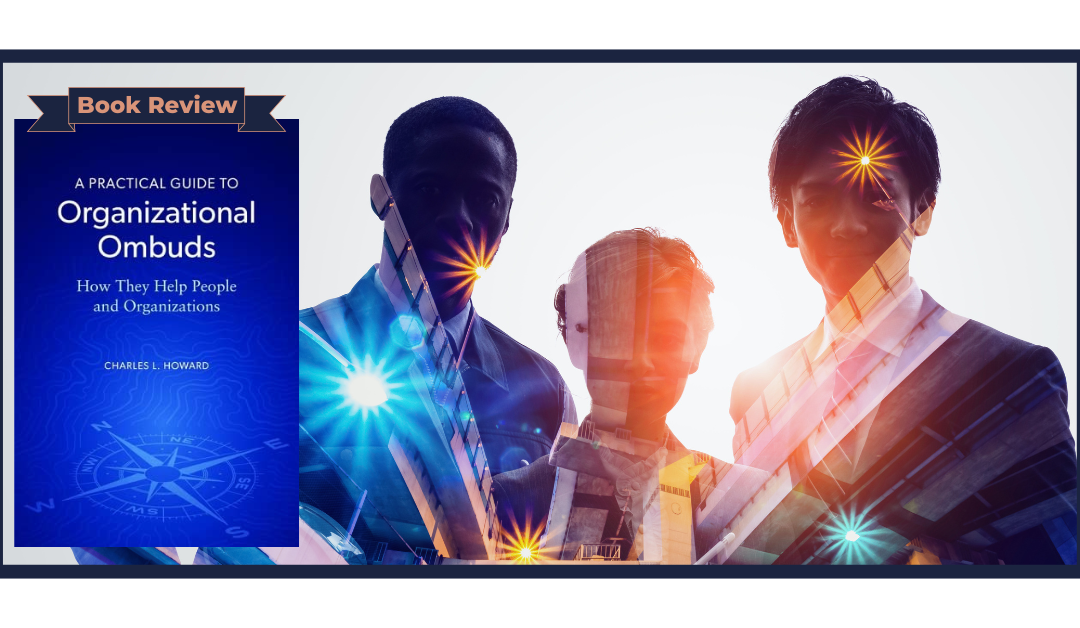Charles L. Howard’s A Practical Guide to Organizational Ombuds: How They Help People and Organizations offers a thoughtful and practical exploration of the ombuds role, making a compelling case for why organizations need independent, confidential, and informal mechanisms for conflict resolution. Howard draws from years of experience to illustrate how ombuds help individuals navigate workplace disputes while also identifying systemic patterns that might otherwise go unaddressed. His writing is clear and accessible, providing both a guidebook for practitioners and an introduction for those unfamiliar with the field.
For those who approach conflict through the understanding-based model, much of what Howard describes resonates deeply. His emphasis on confidentiality creates a space where people feel safe enough to share concerns openly, a principle that aligns with the idea that conflict resolution works best when individuals have the autonomy to engage in it voluntarily. Like understanding-based mediators, ombuds do not impose solutions or act as decision-makers. Instead, they trust people to engage with their own conflicts and offer support to help them do so. The book highlights how essential this function is within an organization—without it, many employees may feel unheard, and problems may escalate or go underground rather than being addressed constructively.
At the same time, Howard’s framework invites reflection on some of the key differences between ombuds work and the kind of direct engagement that understanding-based conflict resolution encourages. Because ombuds primarily work with individuals rather than facilitating conversations between conflicting parties, the resolution process often remains at the level of private consultation rather than mutual dialogue. There is tremendous value in offering individuals a space to think through their conflicts, particularly in workplaces where speaking openly can feel risky. Yet, for those who believe in the power of working together—of putting people in the room with one another to develop shared understanding—the ombuds model raises important questions. What is lost when conflict remains individualized rather than relational? Does the absence of direct engagement limit the potential for deeper transformation?
Another question the book raises is how neutrality functions in the ombuds role. Howard presents neutrality as a necessary foundation for building trust, and in many ways, it is—individuals in conflict need to believe that the ombuds is not advocating for one side over another. But neutrality also has its limits. Understanding-based conflict resolution challenges the terms that conflict often sets—narratives of blame, right and wrong, winning and losing—by helping individuals recognize their own roles in sustaining those dynamics. A strictly neutral stance can sometimes make it harder to push people toward that recognition, particularly if they are looking for validation rather than true resolution.
Similarly, while Howard makes a strong case for the ombuds’ ability to identify systemic issues within an organization, the role itself is inherently constrained. Without decision-making authority, ombuds can surface problems but cannot necessarily address them in ways that shift organizational culture. The understanding-based model emphasizes the importance of shared responsibility in conflict resolution, not only between individuals but at the structural level. If ombuds are expected to remain neutral observers rather than active participants in shaping organizational change, how far can their impact truly extend?
Howard’s book is an important contribution to the conversation about conflict in organizations, and it provides a useful perspective on the ways ombuds can create safer and more functional workplaces. For those committed to deepening understanding through direct engagement, it also raises meaningful questions about the role of individual consultation versus facilitated dialogue, the limits of neutrality, and the depth of transformation that different conflict resolution models can offer. These are not critiques of the book so much as reflections on the broader field—questions that practitioners of understanding-based conflict resolution may continue to explore as they consider how best to support people in working through conflict, not just around it.
